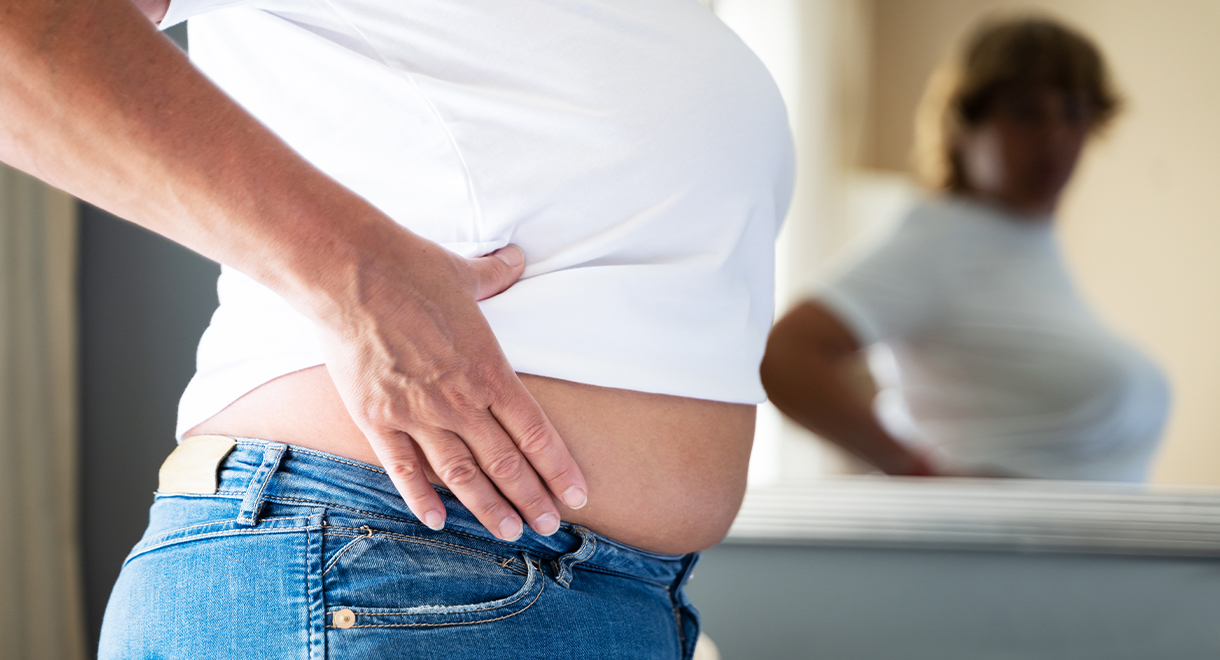

Case Study: Weight Loss In A Menopausal Type 2 Diabetic
Jacqui is a 50 year old lady who came to my clinic seeking help for diabetes. She had been diagnosed as a type 2 diabetic five years ago; although Jacqui thinks she probably had the disease for a lot longer than that because she had been tired and experiencing frequent bladder infections for a long time.
Jacqui weighed 230 pounds and needed to lose approximately 40 pounds to fit into the healthy weight range. All her weight was around the abdomen, which is typical of type 2 diabetics. In recent years Jacqui was too tired to exercise and suffers with a lot of aches and pains which makes exercising unpleasant. Since menopause, a year ago. Jacqui’s sleep quality significantly declined. She wakes frequently at night, thus wakes feeling unrefreshed and depressed about how tired she is.
Jacqui is currently taking metformin for the diabetes and Paxil for depression. She checks her blood sugar at home a few times a week and the first morning reading is usually around 126 or 144 mg/dL (7 or 8 mmol/L). An ideal blood sugar reading is between 65 and 97 mg/dL (3.6 to 5.4 mmol/L).
This is the type of food Jacqui had been eating:
- Breakfast – A bowl of oatmeal with non-fat milk
- Snack – A piece of fruit and a tub of non-fat yogurt or a granola bar.
- Lunch – A tuna salad. Jacqui used vinegar as a dressing and no oil
- Afternoon snack – Jacqui was usually very hungry in the afternoon. She worked from home two days a week and it was very difficult to avoid snacking on those days. On a bad day she ate from around 2:30pm until her evening meal.
- Dinner – Meat, chicken or turkey with vegetables or salad
- After dinner – Similar to after lunch, Jacqui found it hard not to snack after dinner. Her husband bought potato crisps each week and she found it difficult to stay away from them.
Jacqui was always trying to lose weight but constantly felt hungry and knew her blood sugar was too high. I explained to her that eating insufficient protein and fat would leave her constantly hungry and craving carbohydrate. She needed to reduce the carbs while raising protein, vegetables and healthy fats. I told her use an olive oil dressing on her salad, add avocado and increase the portion size of tuna or other protein. She simply wasn’t eating enough for lunch, thus was starving in the afternoon. The eating plan I asked her to follow is in our book Diabetes Type 2: You Can Reverse It.
Recommendations for my patient
I knew Jacqui would really benefit from magnesium. It is a wonderfully relaxing mineral that helps to improve sleep quality and would make her feel much more awake in the mornings. Bio-identical progesterone cream is also excellent for improving sleep quality in post menopausal women.
Berberine improves every aspect of type 2 diabetes. I recommended it to Jacqui to help get her blood sugar into the healthy range more quickly and to make weight loss easier and faster.
I recommended the Synd-X Slimming Protein Powder because it’s a quick way to make a smoothie for breakfast or an afternoon snack. Whey protein is extremely filling and helps reduce sugar cravings.
I ordered a blood test to check Jacqui’s vitamin D level. It was only 19ng/mL. Being low in vitamin D worsens insulin resistance and makes weight loss more difficult. It can also contribute to fatigue and aches and pains. I asked Jacqui to take a vitamin D supplement.
I plan to see Jacqui again in another five weeks. She sent me an email three weeks after seeing me to tell me she had lost seven pounds already.
The above statements have not been evaluated by the FDA and are not intended to diagnose, treat or cure any disease.
Know someone who might benefit from this article? Share it!
4 Comments
Need Help?
1-888-75-LIVER
Monday to Friday, 9:00 am to 5:00 pm MST
100%
Satisfaction Guaranteed
If it’s faulty or wrongly described, we’ll replace it.











The FemPro should be completely safe for you to take.
However, if you are struggling with sleep we recommend taking our magnesium:https://www.liverdoctor.com/top-sellers/magnesium-complete-100-tablets.html
Please read this article re sleep issues in diabetics:https://www.liverdoctor.com/sleep-tips-for-diabetics/
Kind regards,
Jessah Shaw
Nutritionist
Not exactly. Vitamin D puts calcium into the bones but the bones then need vitamin K to spread the calcium around into the correct places in the bones. If you are low in vitamin D then calcium is useless.
Liver Doctor brand of vitamin K contains all the active forms of vitamin K (MK2 & MK4) in dose of 2200mcg combined with 2000IU Vitamin D and is ideal for low bone density. Ss a side benefit it often fixes dizziness and vertigo.
Don't take calcium carbonate as its same as chalk and builds up in arteries.
Dr Sandra Cabot
www.liverdoctor.com